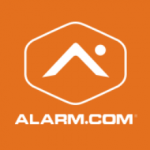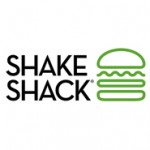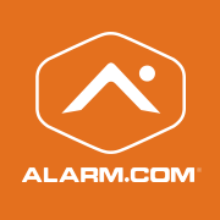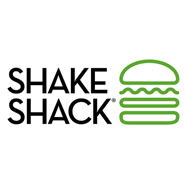Category: consumer stock research
Alarm.com
 Alarm.com (NASDAQ: ALRM), a cloud-based security systems provider is among the recent additions to our Battle Road IPO Review Software sector coverage. Founded in 2000 as part of a research and development unit within MicroStrategy (NASDAQ: MSTR), a provider of business intelligence software, Alarm.com was later spun off from MSTR. Alarm.com is headquartered in Vienna, Virginia, and its CEO and president is Steve Trundle. Consensus estimates call for EPS of $0.14 in 2015, flat with $0.14 in 2014, while revenues are projected to increase by 16 percent in 2015 to $194 million.
Alarm.com (NASDAQ: ALRM), a cloud-based security systems provider is among the recent additions to our Battle Road IPO Review Software sector coverage. Founded in 2000 as part of a research and development unit within MicroStrategy (NASDAQ: MSTR), a provider of business intelligence software, Alarm.com was later spun off from MSTR. Alarm.com is headquartered in Vienna, Virginia, and its CEO and president is Steve Trundle. Consensus estimates call for EPS of $0.14 in 2015, flat with $0.14 in 2014, while revenues are projected to increase by 16 percent in 2015 to $194 million.
Alarm.com debuted on the NASDAQ on June 26, 2015 at $14.00 per share. All proceeds from the seven million share offering went to Alarm.com. Goldman Sachs, Credit Suisse and Merrill Lynch acted as book-running managers for the transaction, with Stifel, Raymond James, William Blair, and Imperial Capital acting as co-managers. At a recent share price of $14.00, the company’s market cap is roughly $635 million.
Alarm.com deploys wireless security systems that can be monitored using video, mobile apps, and web-based apps. In 2010, Alarm.com added to these systems by allowing users to control heating and cooling temperatures using these apps. With 2.3 million subscribers, 25 million connected sensors and devices, and 20 billion data points processed in the last year alone, Alarm.com claims to be the largest connected home platform. This platform has been built specifically for home and business security, with a network of more than 5,000 service providers, with expertise in design, sales, installation, and support for the platform.
The connected home platform designed by Alarm.com has four main segments: Interactive Security, Intelligent Automation, Video Monitoring, and Energy Management. Interactive Security is an always-on security system powered by cellular connection which can survive otherwise detrimental occurrences such as line cuts, power outages and network problems. Interactive Security includes app alerts and triggers and constant emergency response. Intelligent Automation allows users to connect and control security systems, garage doors, lights, locks, thermostats, electricity and other devices. Intelligent Automation learns patterns and recommends adjustments.
Video Monitoring allows for on-demand viewing of security footage which can be accessed at any time, including live streaming, video alerts, constant high definition recording and clip captures. Video Monitoring can be accessed through the web and mobile apps. Energy Management enables users to control energy usage and comfort and is connected to thermostats, power meters, lights, shades, solar panels and appliances. Energy Management controls devices and manages temperatures. Users can also obtain a real-time look into their energy usage and efficiency. The pricing for Alarm.com is a monthly fee starting at $13.99 for homes and $19.99 for businesses, with more features available for a higher cost. There is also an initial set-up fee.
The Alarm.com app, which can control the entire connected home platform, is available on the iPhone, iPad, Android, Windows Phone, Apple Watch, Pebble Watch, and Amazon Fire TV. This app is what brings the connected home platform together, allowing users access to their homes while out and about. Main competitors of Alarm.com include iControl, Frontpoint, Protect America, LiveWatch, Link Interactive, SimpliSafe, LifeShield, AlarmForce, ADT, and Vivint. Post-IPO, we note that Alarm.com has a solid balance sheet, with over $100 million in cash and net debt of just $7 million.
Shake Shack: Shaking Up the Status Quo in Casual Dining
 Shake Shack (NYSE: SHAK), a fast casual restaurant specializing in hamburgers, hot dogs, crinkle-cut french fries, frozen custard, milkshakes, beer and wine, is one of the most intriguing recent additions to our Consumer sector coverage. Founded in New York City in 2004 by restaurateur Danny Meyer, the restaurant chain is a part of the Union Square Hospitality Group (USHG), which focuses on strengthening communities through hospitality, excellent food, and the use of high quality ingredients. Consensus estimates call for revenue of $161 million in 2015, up from $117 million in 2014, and EPS of $0.05 in 2015, as compared to $0.06 in 2014.
Shake Shack (NYSE: SHAK), a fast casual restaurant specializing in hamburgers, hot dogs, crinkle-cut french fries, frozen custard, milkshakes, beer and wine, is one of the most intriguing recent additions to our Consumer sector coverage. Founded in New York City in 2004 by restaurateur Danny Meyer, the restaurant chain is a part of the Union Square Hospitality Group (USHG), which focuses on strengthening communities through hospitality, excellent food, and the use of high quality ingredients. Consensus estimates call for revenue of $161 million in 2015, up from $117 million in 2014, and EPS of $0.05 in 2015, as compared to $0.06 in 2014.
Shake Shack debuted on the New York Stock Exchange on January 30, 2015, in a five million share IPO priced at $21.00 per share. The underwriters fully exercised their over-allotment of 750,000 shares. All proceeds of roughly $100 million from the offering went to Shake Shack. J.P. Morgan and Morgan Stanley were the lead book-running managers for the transaction, with Barclays Capital, Goldman Sachs, and Jefferies as book-running managers, and William Blair, and Stifel acting as co-managers for the offering. The stock’s current price is roughly $43 per share, and its market cap is about $500 million.
Shake Shack hails from humble roots, as it started out as a food cart in New York City in 2001, when founder Danny Meyer looked to improve Madison Square Park. Meyer helped create the Madison Square Park Conservancy to redevelop the park, and his director of operations Randy Garutti (now Shake Shack’s CEO) established the Shake Shack food cart. After three years of remarkable success, Shake Shack applied for an opening from New York’s Department of Parks and Recreation to establish a kiosk style restaurant to help fund the future of Madison Square Park.
Shake Shack ultimately won the rights to create this restaurant and thus opened the first Shake Shack in Madison Square Park in 2004. As a result of its immense popularity, a rekindled interest in ground beef, and the ambition of its owners, Shake Shack has branched out to over 60 locations, including Atlanta, Baltimore, Boston, Chicago, Las Vegas, Washington DC and Philadelphia, as well as abroad in Dubai, Abu Dhabi, London, Moscow, Beirut, Doha, Kuwait City, and Istanbul.
Shake Shack is attempting to create its own sector and become the first-ever self-described “fine casual” restaurant, combining the ease, accessibility and cost of fast casual restaurants with high quality ingredients, food preparation, and warmth of fine dining. Shake Shack is more expensive and upscale than other restaurants in this mold. The average two person meal at Shake Shack is approximately $30.00, significantly higher than other fast casual burger restaurants. In turn, this relatively high price makes for a more upscale feel and sophisticated crowd.
Shake Shack is also viewed as a “cult” restaurant, meaning that it is not exactly mainstream, but only those that are a “member of the club” know about the restaurant. Another difference that Shake Shack boasts is that it is not yet an enormous brand. Unlike its competitors, upon opening, each Shake Shack location aims to be the “community-gathering place”. Shake Shack is also environmentally friendly, and has a mission to “Stand For Something Good” in all things and aspects of not only its business, but also as people. Shake Shack inspires all of its customers and employees to take this approach to everything they do.
To see how Shake Shack screens against a comparable group of over 40 Internet IPOs of the last seven years, please contact Battle Road Research.
- ‹ Previous
- 1
- 2
- 3
- Next ›


